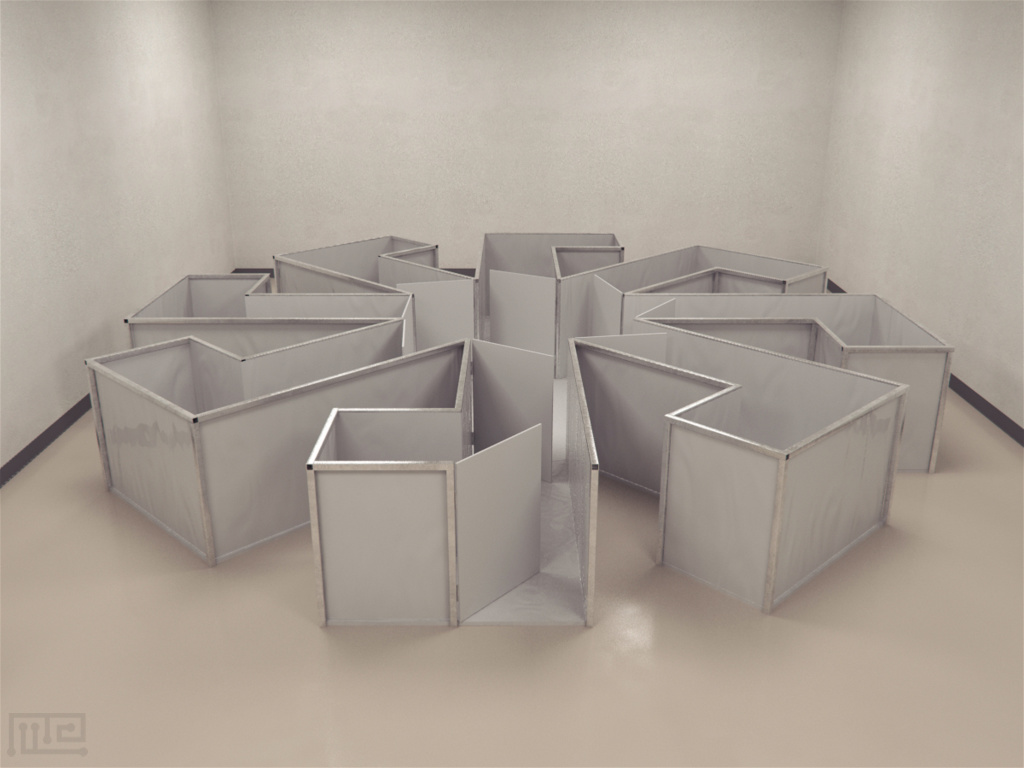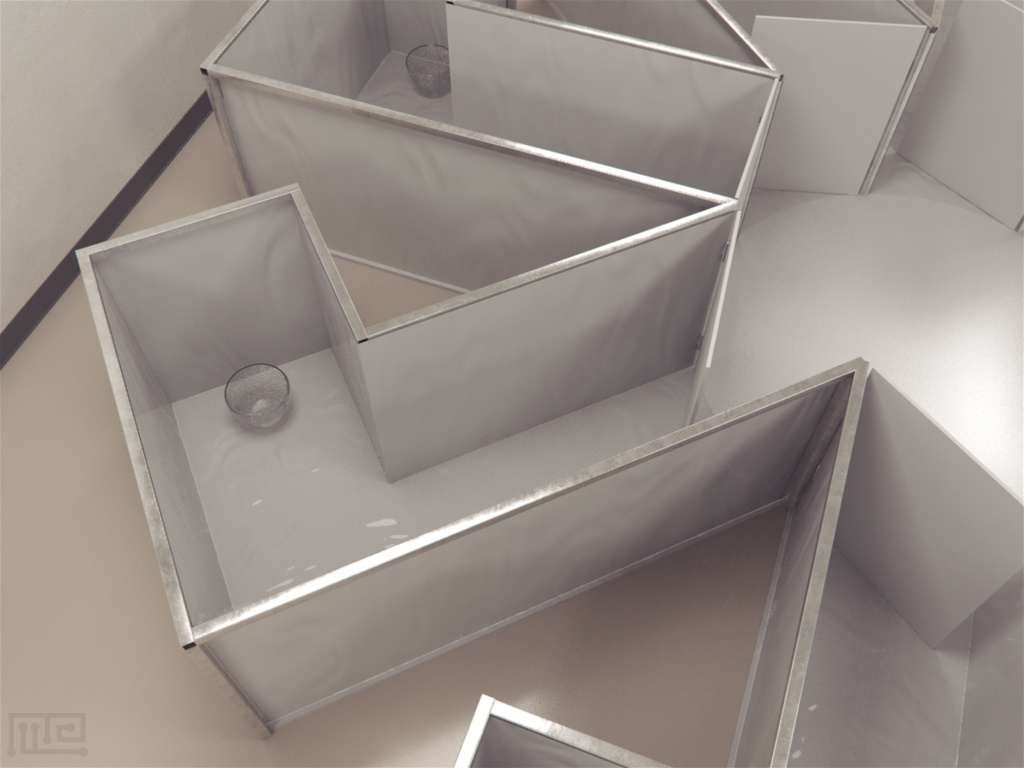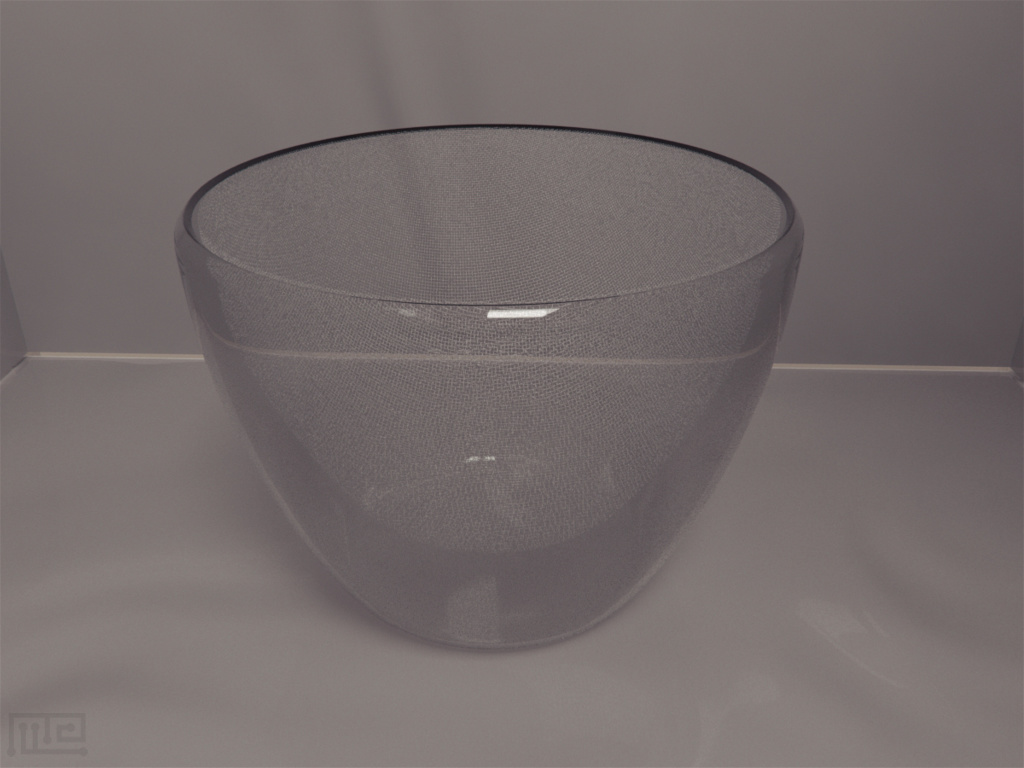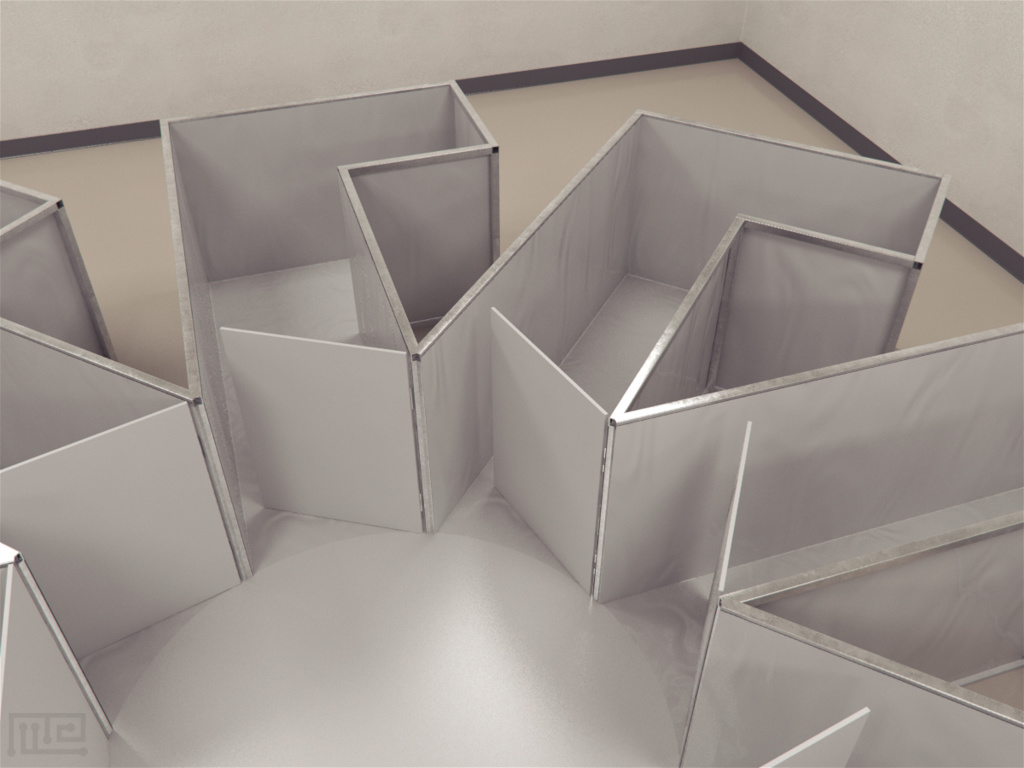The Dogs 8 Arm Radial Maze is a behavioral task used to assess canine spatial learning and working memory. The test utilizes the hippocampal-dependent spatial reference memory and innate explorative drive in the dogs to evaluate cognitive functioning. The apparatus offers a straightforward toolkit to demonstrate serial position effects, active and passive learning, delay associations, and spatial navigation cues. The serial position effects refer to listing memory, whereby, the ability to remember the position of the item in the list is evaluated. It has been observed that there is a difference in memory recalling the items situated at the first (primacy), in the middle, or in the end (recency) of the list. The differences in the primacy and recency effects have been attributed to many factors including the visual, olfactory, and kinesthetic clues (Craig et al. 2012). Also, the eight-arm radial maze is prominently used in other species like mice and rats to evaluate working and reference memory; therefore, the apparatus aids to develop comprehensive and easier inter-species comparisons. This comparison is then translated to advance the understanding of human memory and its decline.
Price & Dimensions
Canine RAM
$ 24000
One maze- Central Arena: 152cm diameter
- Arm Length: 167 cm
- Arm Width: 58 cm
- Arm Height: 75 cm
Documentation
Introduction
The Dogs 8 Arm Radial Maze apparatus consists of eight equal-length and equidistant arms radiating out from the central arena. The subject is allowed to choose among the arms baited with invisible food rewards at the end of the arm. The task utilizes food deprivation as a stimulus to encourage the exploratory behavior. The behavior of the animals is scored for the arm choices made in the search for the reward, and working and reference memory errors made because of re-entry in the previously visited arm. The apparatus can also be adapted for free- and forced- choice trials to evaluate choice mechanisms and serial memory in subjects.
The eight-arm radial maze is constructed on a central aluminum platform from which eight L-shaped, equidistant arms protrude to make a star-shaped apparatus. The maze alleys are bolted with the help of hinged doors which are opened and closed as per the experimental needs. Other apparatuses used to evaluate spatial learning and memory include the Y-maze, Hairpin maze, Morris water star maze, and the Radial arm water maze.
Apparatus & Equipment
The apparatus consists of eight L-shaped arms radiating from a central circular platform. The central arena has a diameter of 152 cm approximately. The 167 x 58 x 75 cm arms (length, width, and height respectively) are closed with the help of hinged guillotine doors, which are opened to allow the subject to enter the specific alley or are closed to limit the access. The arms are secured by the aluminum maze walls which restrict any external cues from disturbing the test subject. Each maze arm has a double-layered plastic reward bowl placed at the end. The bottom layer of the bowl holds the food treats and is perforated to allow odor permeation. The bottom layer is clipped to the upper layer to prevent the dogs from obtaining this food. The top layer of the bowl is baited with accessible food. The subjects are restricted using a 5 meters extendable leash that allows the experimenter to perform forced choice trials.
Training Protocol
Before beginning the testing protocol, the maze alleys should be damp-mopped before and between the trials. By using the fabric odor-eliminating spray, the persistent odor can be neutralized during the trials. Place the baited bowl at the end of the maze arms as per experimental needs. The apparatus should be well lit, and shadows should be prevented from disturbing the task performance.
A video recording and tracking system such as the Noldus EthoVision XT can be used to assist with task observations.
Pre-training
The pre-training is done to acclimatize the animals to the maze and the food rewards placed at the end of the arms. Bait the maze alleys to encourage the exploratory behavior further. Each animal is given at least ten practice trials. Trial the animal once a day. Place the test animal in the central arena and allow it to explore the maze until it obtains all the placed rewards.
The pre-training procedures may vary according to the experimental needs.
Evaluation of Working Memory
For working memory assessment, free exploration trials are performed. Place the dog in the central arena and open the gates of all the maze alleys. Place food treats at the end of each maze arm. Allow the animal to explore the maze freely. Observe the behavior of the dog until it obtains all the food rewards. Consider the animal entered, if it crosses two-thirds of the arm.
Evaluation of Reference Memory
For reference memory assessment, put the food reward in four out of eight arms. Introduce the animal from the central platform and allow it to explore the maze. On returning to the central arena after obtaining the reward from one arm, close that arm and open the other seven alleys. If the subject enters the arm without food, count it as a reference memory error. Record the behavior of the animal in the maze.
Evaluation of Serial Position Effect
In this trial, place the dog in the central arena, and open the baited arms one by one. Allow the subject to retrieve the food until seven forced choices are made. The eighth arm is the distracter. After completing this, open the previously visited arm and the distracter simultaneously. Continue the trial until the eight selected-free choices are recorded. Observe the probability of correct choices made in the temporal sequence to evaluate the serial position effect in the subjects.
Assessment of the implication of resveratrol in cognitive functioning
Story et al. (2012) investigated the effect of resveratrol supplementation on cognitive ability in dogs. The subjects were divided into three groups: control group, resveratrol-treated gonadectomized group, and placebo-treated gonadectomized group. The animals except control group received 60 mg/kg resveratrol or placebo for two to four weeks before the trials started. Eight-arm Radial Maze was used to evaluate working memory in the dogs. The animals were allowed to explore the maze freely for the food reward placed at the end of each alley. During the 20-minutes trial, the dogs achieved an average of 7.2 correct choices over four consecutive trials. No noteworthy contrasts in the three cohorts for working memory were observed. Based on these observations, it was concluded that short-term oral resveratrol treatment does not improve the cognitive functioning in young, healthy dogs receiving extensive handling and environmental enrichment.
Investigation of serial position effect of spatial learning
Craig et al. (2012) assessed the listing memory and sequential retaining in domestic dogs. The study included three groups: untreated control group, resveratrol-treated gonadectomized group, and placebo-treated gonadectomized dogs. Sequence recall ability of dogs is utilized to evaluate the presence of primacy or recency effect using the eight-arm radial maze. During the selected-free trials, it was observed that the animals chose previously unentered arm correctly more often than expected. The results indicated a stronger primacy effect (recalling the items situated first in the list) than recency effect (remembering the bottom items in the list) in dogs.
Data Analysis
Data obtained from the Eight-arm Radial Maze is simple and easy to analyze. The parameters recorded in the task performance are mentioned below:
- The number of arms animals enter before locating the reward
- The number of different arms visited before finding the reward
- The sequence of the arms chosen
- Time taken to reach the reward
- Distance traveled
- Time spent in the central arena
- Time spent in the arm
- The number of trials taken to find the food
Strengths & Limitations
Strengths
The Eight-arm Radial Maze is a widely used neurobehavioral modality to assess spatial learning and working memory in dogs. Dogs as experimental animals are cheaper to maintain and easily accessible in large numbers. The apparatus is available for a range of species; therefore, the test is valuable for inter-species behavior comparisons. The task can be used to demonstrate serial position effects, spatial navigation, spatiotemporal memory approaches, delay implications, food-storage behavior, and active as well as passive learning. The studies involving neuropathology, age-related memory decline, cortical lesions, brain injury, and neuropsychiatric disorders can be well investigated using the Eight-arm Radial Maze.
Limitations
The Eight-arm Radial maze alone cannot cover the whole spectrum of spatial navigation and working memory. Thus, using it in combination with other neurobehavioral assays is recommended. Irregular chaining patterns in serial position effects assessment may render the investigation of spatial memory difficult, but it can be minimized by interfering with the sequential choices. The task requires food deprivation as stimulus; therefore, it is essential to make sure that all the experimental animals are equally hungry and motivated for the reward search. Further, the presence of proximal and olfactory cues may disturb the task performance. The outcomes may vary depending on the strain, age, species, and sex of the subject; thus, care must be taken while translating the results to human applications.
Summary & Key Points
- Eight-arm Radial Maze is a reliable task to investigate spatial, working and reference memory.
- The animals are scored for decisions taken to obtain the food, and errors made owing to re-entry into the previously visited arm.
- Eight-arm radial maze is walled and minimizes external, proximal, and distal cues from disturbing the task performance.
- By manipulating the task parameters and animal states, the apparatus can be effectively used to study working and reference memory interactions.
- Availability of the equipment for a range of species allows inter-species spatial learning comparisons.
- The apparatus can be used to investigate active as well as passive learning in domestic dogs.
- The toolkit is valuable to assess the serial position effect in canine disease models.
- Eight-arm Radial Maze alone may not provide a detailed analysis of spatial learning. Hence, it should be used in combination with other behavioral assays.
References
Craig, M., Rand, J., Mesch, R., Shyan-Norwalt, M., Morton, J., and Flickinger, E. (2012). Domestic dogs (Canis familiaris) and the radial arm maze: spatial memory and serial position effects. J Comp Psychol, 126 (3), 233-42.
Story, M, M., Rand, S, J., Shyan-Norwalt, M., Mesch, R., Morton, M, J., and Flickinger, A, E. (2012). Effect of Resveratrol Supplementation on the Performance of Dogs in an Eight-Arm Radial Maze. The Open Nutrition Journal, 6, 80-88.




